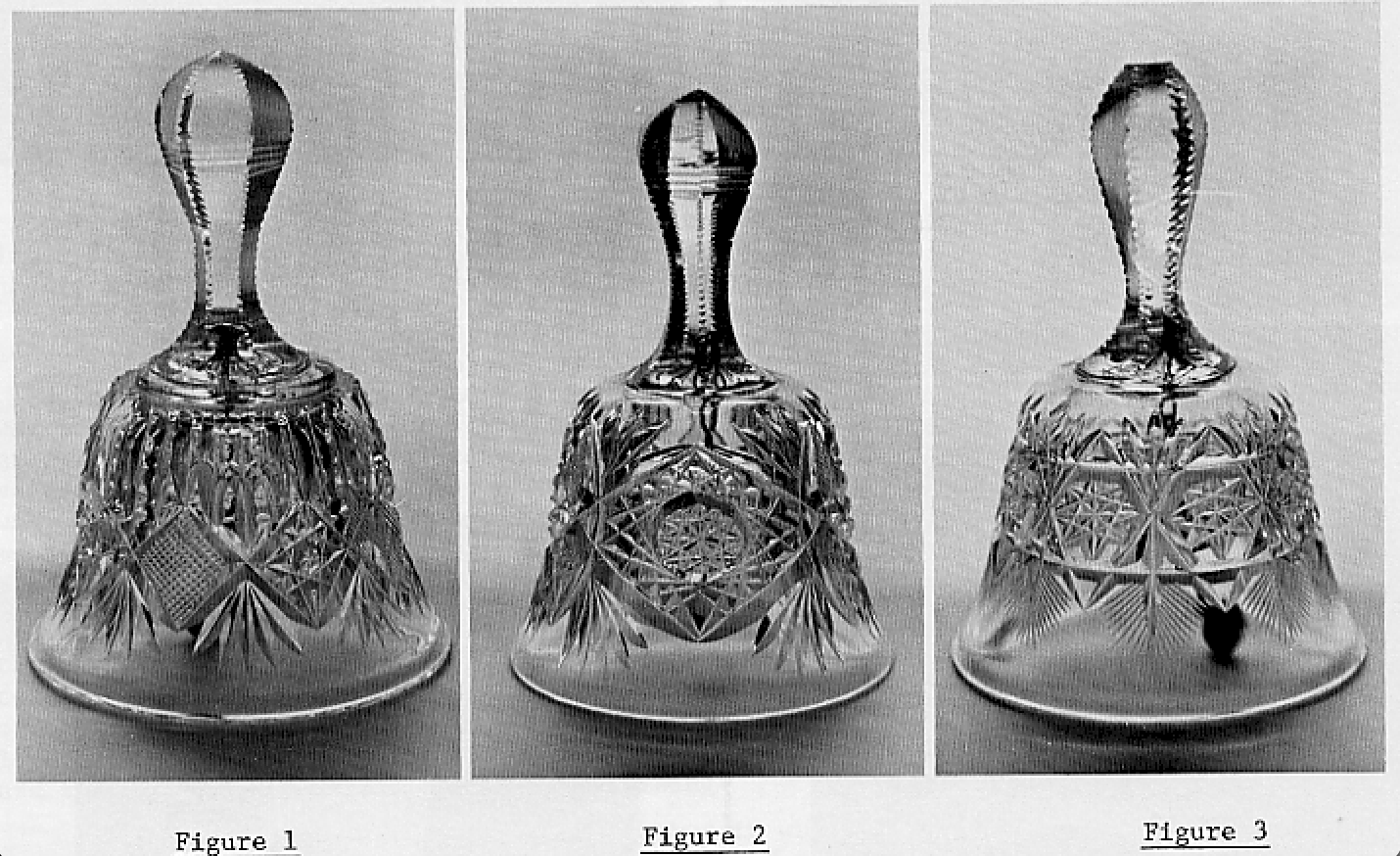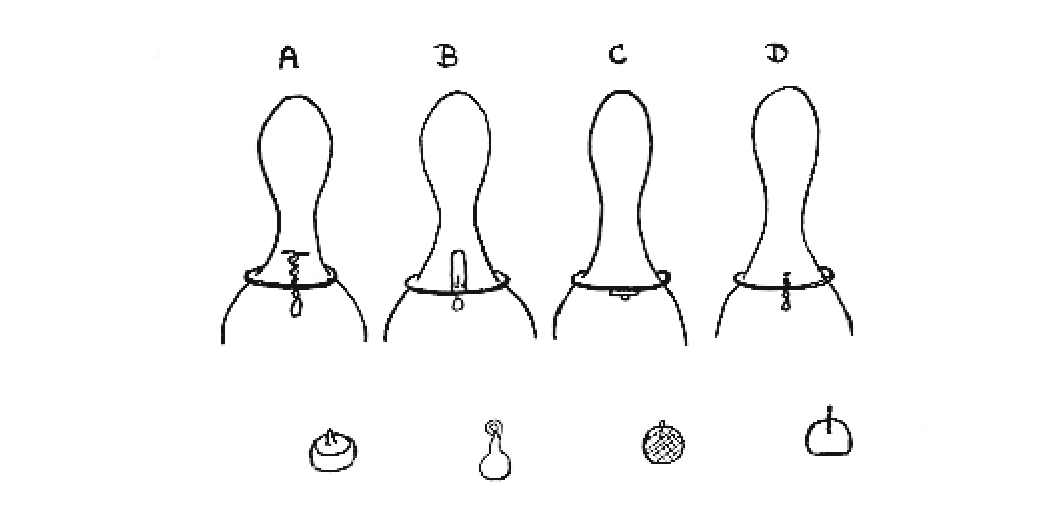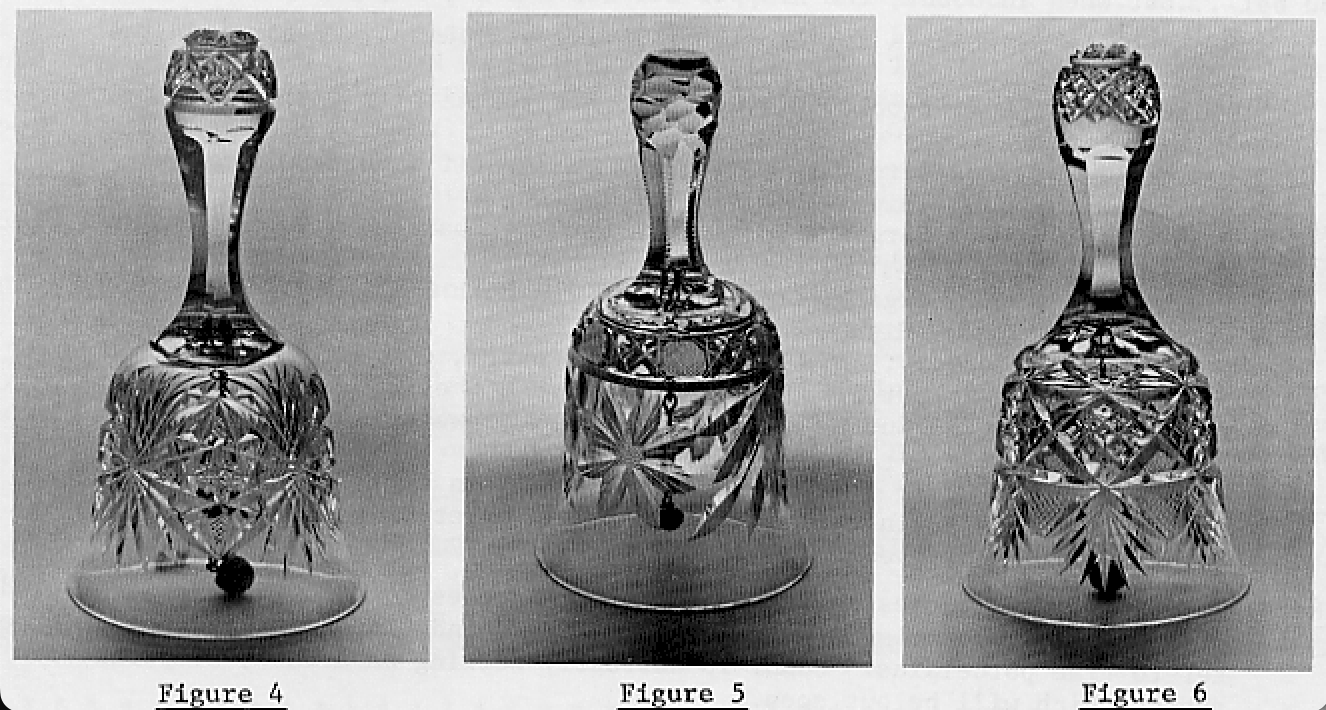Bells
By Jonni & Vernon Jones
Reprinted from The Hobstar, December 1985

Vernon and I have been bell collectors since 1956. We "gathered’ for fifteen years before we discovered Flea Markets, Antique Shows and the American Bell Association. As we made our way through endless shows, Vernon began purchasing small pieces of American Brilliant Period cut glass. It was not until he bought our first bell in 1975, that I became interested. I now share his love of this beautiful glass.
Joining ACGA was another milestone. We enjoy the "Hobstar" and our local Blackhawk Chapter..gaining much information from both. The majority of our bells, including our first one, were purchased from a local ACGA member/dealer... they have been our mentors.
Cut glass bells of the Brilliant Period are the least appreciated or understood among glass bells. This is hard to believe when you see their brilliant sparkle... that sparkle is unsurpassed!
In our search for the authentic Brilliant bells, we find the main identifying feature is the clapper attachment. We would like to share some of the bits and pieces of knowledge we have gleaned through the years.
Sketch A.. This is the type found in bells made in the old and late 1800's. It is a single wire twisted to form a loop. The twisted wire extends into the handle leaving the loop free at the bell shoulder. The ends of the wire are then spread, one end on either side of the handle, forming a horizontal attachment. The chain attached to the shoulder loop is heavy and unattractive with a two-part lightweight metal ball for a clapper. The hollow outer half fits over the inner ball, much like an old-fashioned button. In the 1970’s Steuben issued a bell with this type attachment. The wire is much finer and extends just past the bell shoulder.
Sketch B .A plaster attachment. The plaster is inserted into a hole in the handle and the twisted wire is set into the plaster. The ends of the wire are not spread, so it is not as secure and may loosen and fall out after much use. The clapper is a lead pellet instead of the two-part ball. We began to see this type in the bells made around 1900. Foreign made bells have this attachment, except the chain is fine and has a cut crystal bead for a clapper.

Sketch C.. .We are aware bells are made from Brilliant Period goblets, wines, etc. This type is easily recognized. A very fine chain with a cut crystal bead as clapper in attached to the bell shoulder with a metal or plastic disc which in turn is held in place with epoxy.
Sketch D.. Many of the old American Pattern Glass bells have this type of attachment. The twisted wire barely extends into the handle. Unfortunately, new engraved bells imported from Portugal are also made this way. Beware!

We know that some bell attachments have been repaired. We are not in favor of this. We will add a missing chain and clapper if the shoulder loop is intact, so we can enjoy the ring...otherwise we leave it "as is"! A bell is repaired when the shoulder loop breaks from wear and rust. Plaster is inserted into the old wire space and a new wire is set in-to it. You usually can see the old horizontal wire through the plaster.
We weigh all our bells. A bell 6½" high should weigh from 9 oz. to 1 lb.

When we recognize a pattern, or find the authentic signature...we know it’s a Brilliant Period bell...but when in doubt, the clapper attachment is the way to "it's age".
Fig. 1. "Monarch" by J. Hoare & Co. Horizontal wire attachment. 2—part clapper.
4½" High — 7 oz.
Fig. 2. "Prism" by Pitken & Brooks, Circa 1907. Horizontal wire, 2—part clapper.
4½" High — 8 oz.
Fig. 3. Chain of Hobstars alternating with Fan & Fern Motif. Horizontal wire.
2—part clapper. 4½"High — 8oz.
Fig. 4. "Electric" by J. D. Bergen & Co. Circa 1904. Repaired wire attachment
(Plaster inserted). 5½ High — 9 oz.
Fig. 5. "Premier" by J. D. Bergen & Co. Circa 1897. Both have horizontal wires,
2—part clapper. 6½ High - 1 lb.
Fig. 6. "Colonial" Pat. July 4, 1893 by James J. O’Connor, C. Dorf linger & Sons.
Horizontal wire, 2—part clapper. 5 3/4" High — 8 0z.
Fig. 7. Intaglio & Geometric Cut by Paul Richter Co., Maywood, Il. Circa 1914
6½" High — 11 oz.
Fig. 8. 8 Turquoise Cut—to—clear in Strawberry Diamond & Fan by T. G.Hawkes & Co.
Circa 1900. Plaster insert attachment, Lead Pellet Clapper. Pictures
"Complete Cut & Engraved Glass of Corning", pg. 77.





